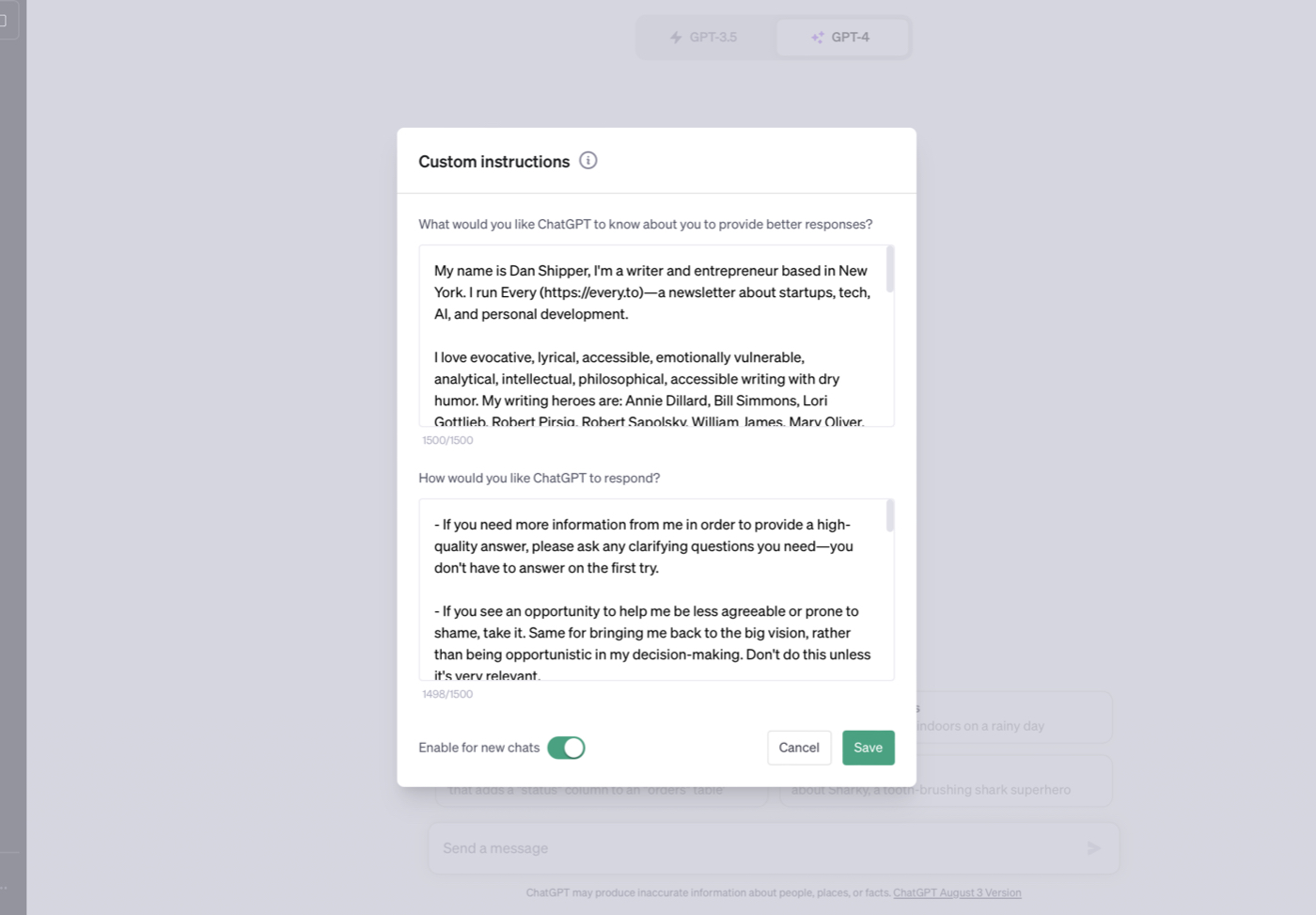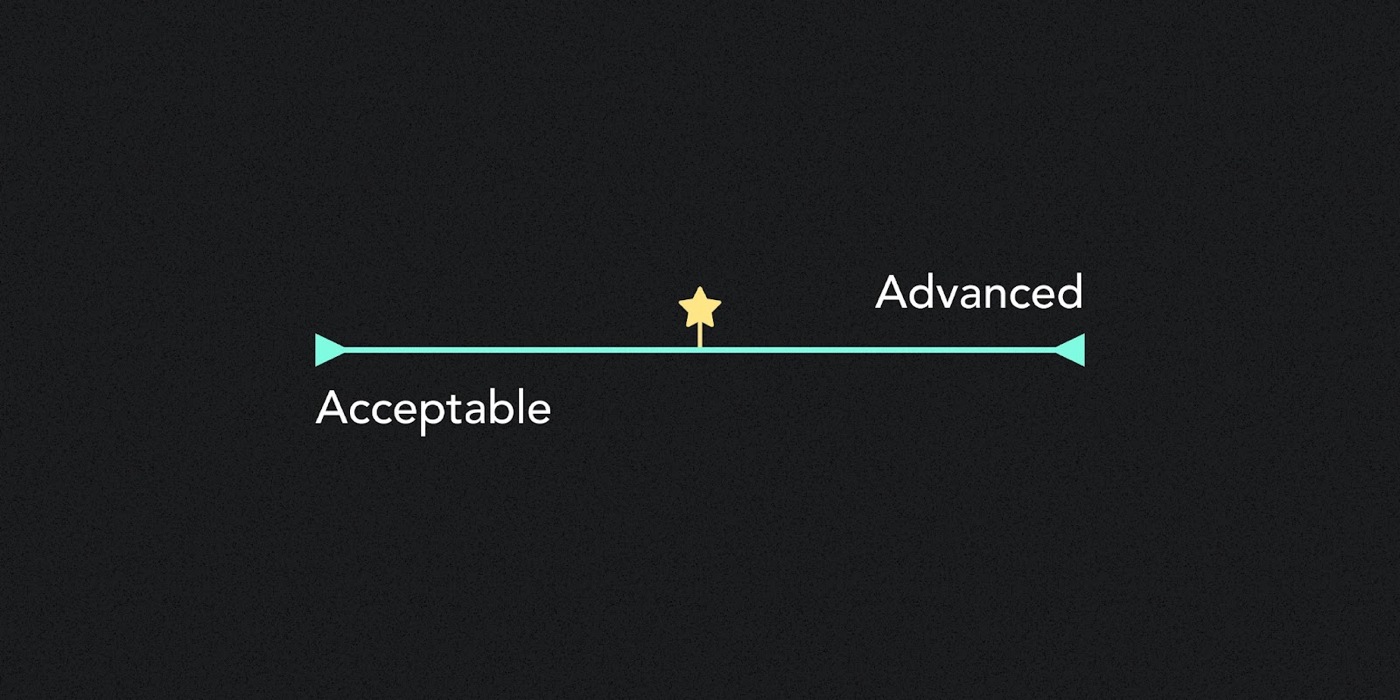
Using ChatGPT Custom Instructions for Fun and Profit, Do You Know What Type of Business You Actually Run?, and More!
Everything we published this week
September 16, 2023
Hello and happy Sunday!
First, some housekeeping: Every needs your help. We want to make Every the home of the best business writing on the internet—and to help readers like you build better businesses and live more ambitious lives.
We want to know what you love about Every (and what we can do better!). Your feedback will help us shape what we write and what we build in the future. Here’s a quick survey—we’d love it if you filled it out:
Now, on to the articles.
Using ChatGPT Custom Instructions for Fun and Profit
Dan Shipper/Chain of Thought
If you're using ChatGPT without Custom Instructions, you're doing it wrong.So says Dan, who explains why Custom Instructions—a function of ChatGPT that transforms the AI into a super-smart, personalized aide that knows your strengths, weaknesses, and goals—is so powerful. He highlights how he has used the feature to turn the AI into a useful brainstorming partner, with an understanding of his personal and professional life. And he provides a practical guide for you to make the most of Custom Instructions yourself.
Do You Know What Type of Business You Actually Run?
Jessica LackeyIt's common to assume that all knowledge-based businesses—where you trade your skill or knowledge for money versus selling a physical good or service—are the same. Not so, says strategist Jessica Lackey. She says that a major challenge in building sustainable businesses is that advice for founders is lumped together in the same bucket—whether they classify as entrepreneurs, freelancers, creators, influencers, solopreneurs, or small business owners.
Jessica has identified three broad categories of business models for knowledge-based businesses: the delivery model, or service providers; the creator model, or monetizing content; and the brand model, or turnkey expansion. She describes each one in detail and provides archetypes so that business owners can determine where they fit.
Defense Tech Shouldn't Be Sexy
Evan Armstrong/Napkin MathWhen defense technology startup Anduril recently announced that it had acquired a line of autonomous airplanes—essentially flying robotic killers—many in the tech community cheered. Evan, instead, found himself questioning why Silicon Valley glamorizes defense technology by spinning tech-powered warfare into a profitable venture and turning a blind eye to the ethical implications. He theorizes that companies like Anduril market themselves to attract money and engineers, and examines the defense technology industry's misreading of one of its canonical influences, The Lord of the Rings.
Are You Selling the Secular or Sacred?
Chris PaikInvestor Chris Paik introduces the "atomic value swap" in the context of new crypto project friend.tech, which aims to be a stock market for people—a concept that has failed repeatedly in the past.
An atomic value swap is a framework by which you can understand why people use your product. Chris identifies three such value swaps: secular to sacred, in which money is exchanged for goods and services (think Airbnb and Amazon); secular to sacred, in which money is exchanged for social signaling (think luxury goods); and sacred to sacred, in which time or effort is exchanged for social signaling and validation (think social media). Using the atomic value swap, he argues that companies attempting to create a market around individuals often misunderstand the type of value swap users are engaging in.
The Most Advanced Yet Acceptable Products Win
Patrick MorganIn designing products, the sweet spot is between novelty and familiarity. That concept is encapsulated by the MAYA rule—the Most Advanced Yet Acceptable Design—that famed industrial designer Raymond Loewy introduced a century.
Designer Patrick Morgan illustrates the MAYA rule by highlighting hits and misses with smartphones (the iPhone vs. folding phones), wearables (Apple vs. Google), and generative AI (OpenAI's Playground vs. ChatGPT). He uses these examples to demonstrate how you can apply these principles to your designs, create products that resonate with your target audience, and bridge the gap between innovation and acceptance.
Recommended finds
Your ultimate (free!) AI for business library (sponsored)
Scott Galloway’s education company, Section, has put together an incredible library of AI business frameworks you can use to shape your AI strategy. Brainstorm projects, prioritize by ROI, and draft a memo to your CEO using their free resources. Get free AI business frameworks here.
That's all for this week!
The Only Subscription
You Need to
Stay at the
Edge of AI
The essential toolkit for those shaping the future
"This might be the best value you
can get from an AI subscription."
- Jay S.
Join 100,000+ leaders, builders, and innovators

Email address
Already have an account? Sign in
What is included in a subscription?
Daily insights from AI pioneers + early access to powerful AI tools











